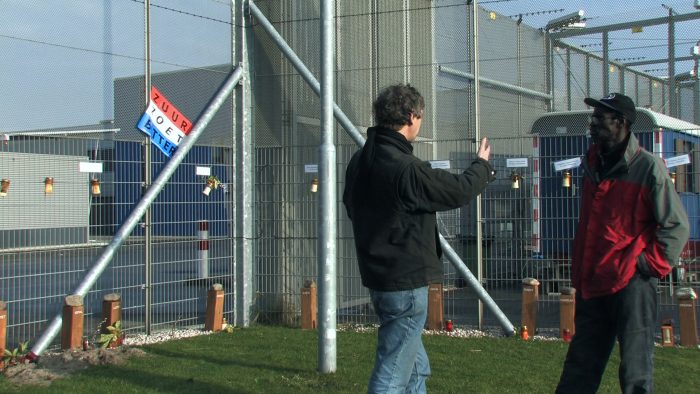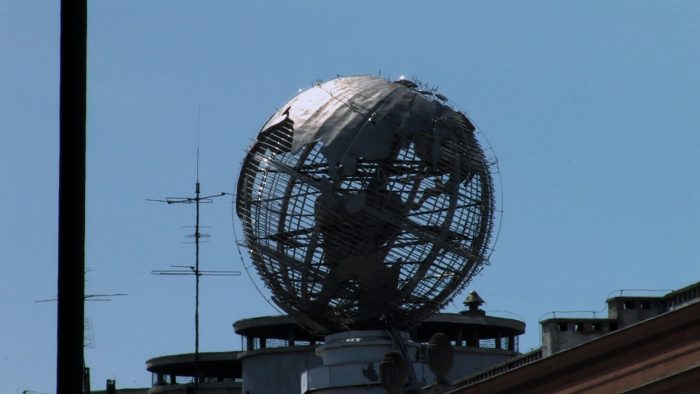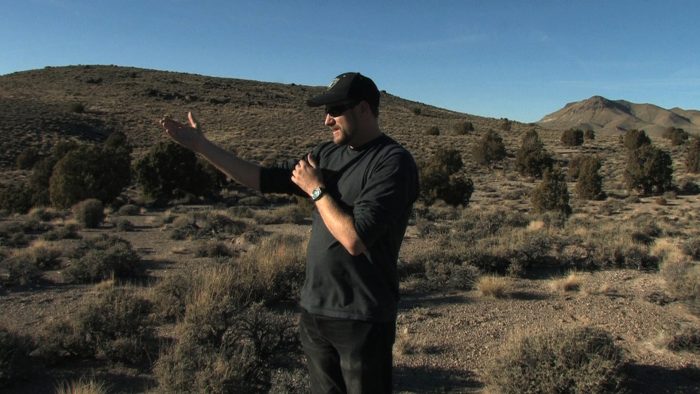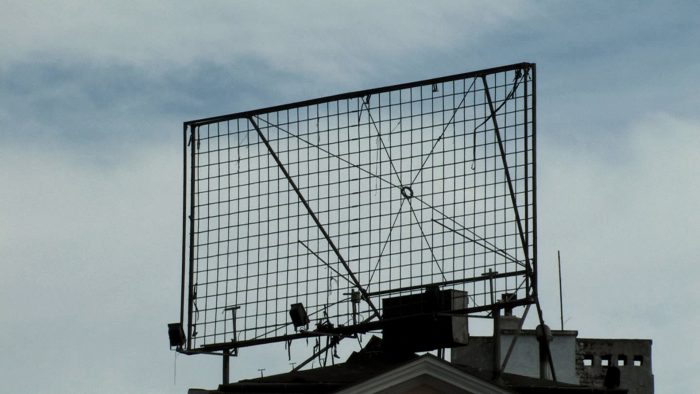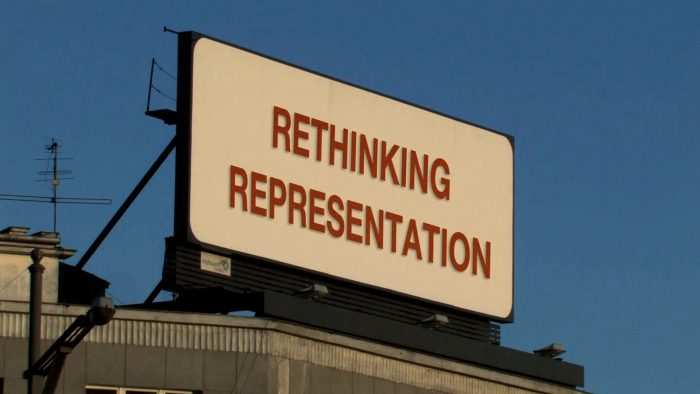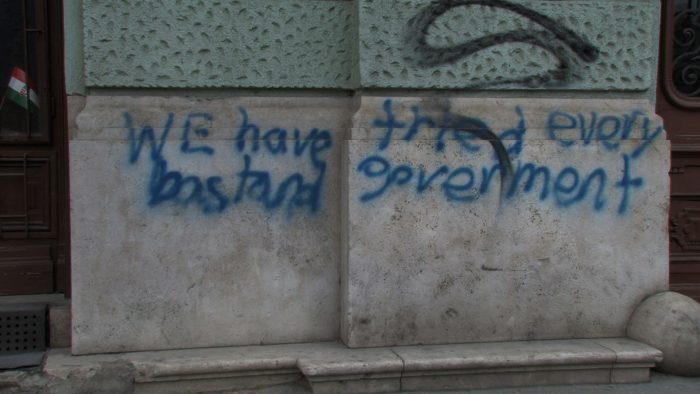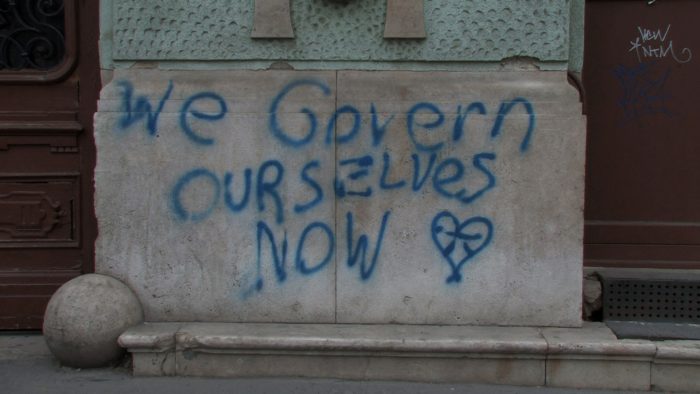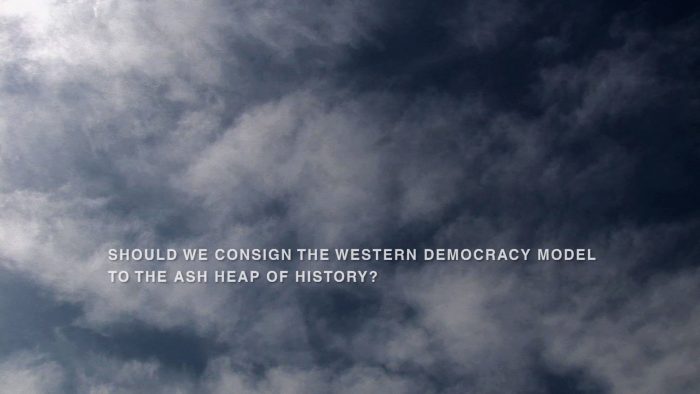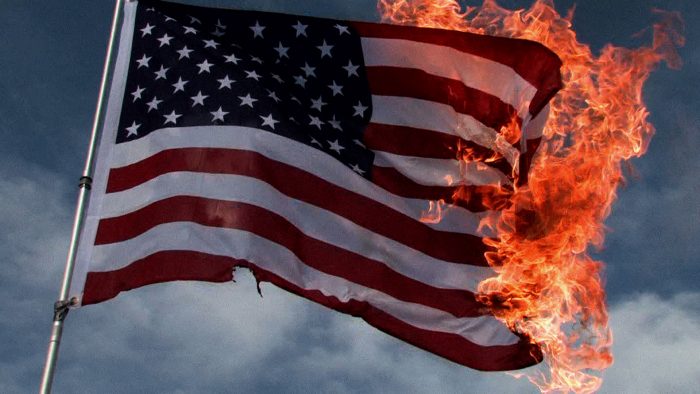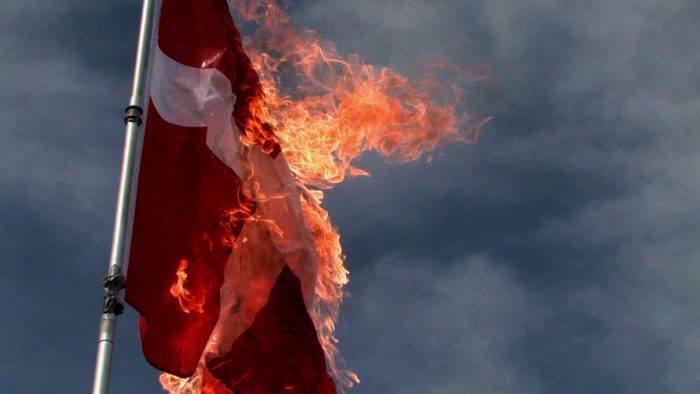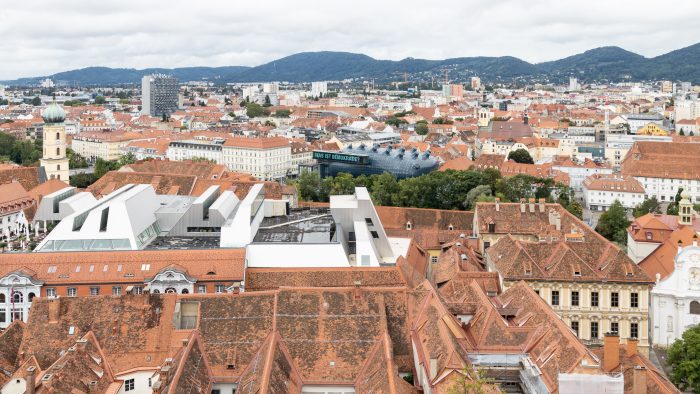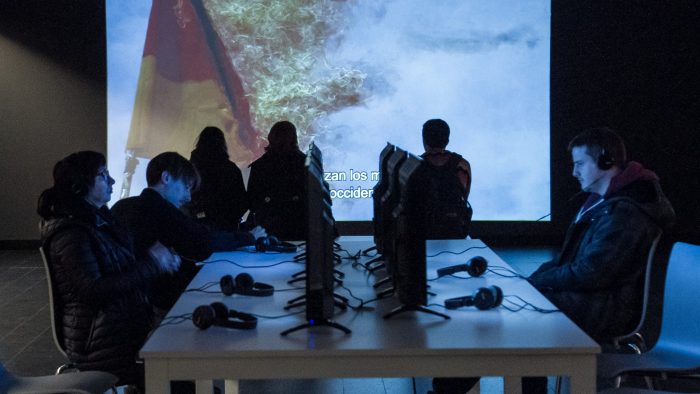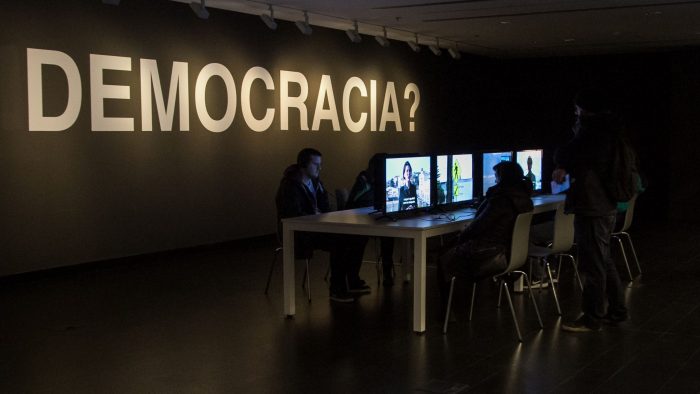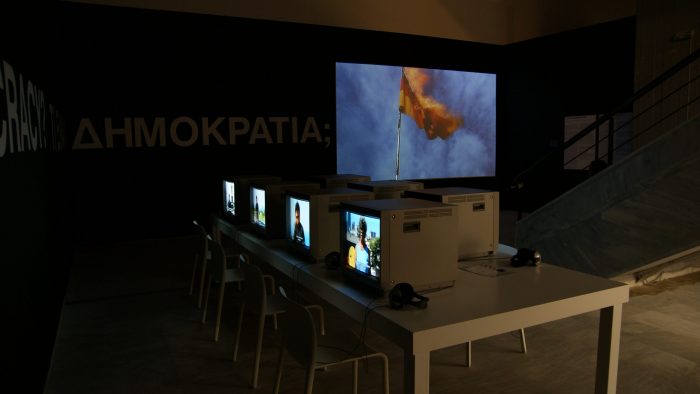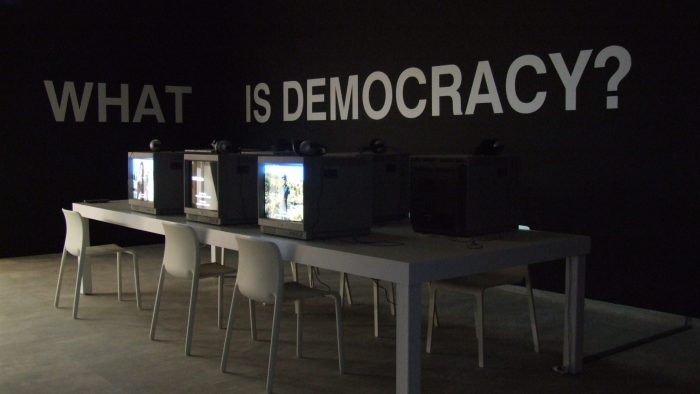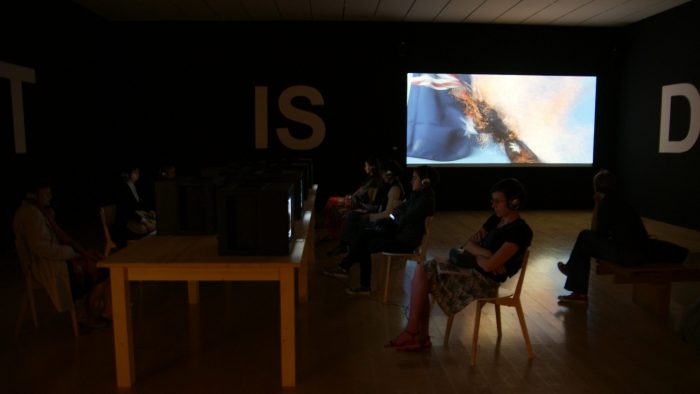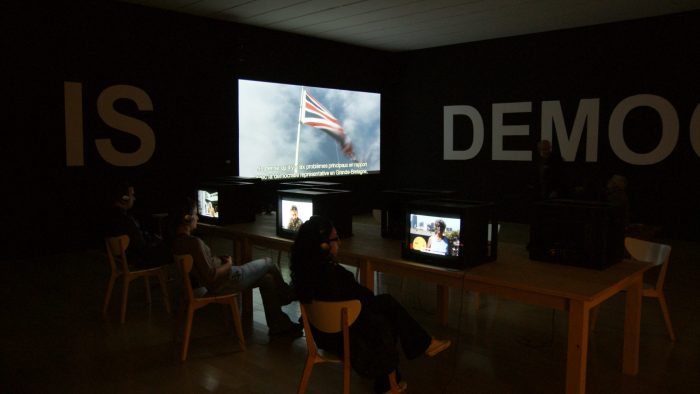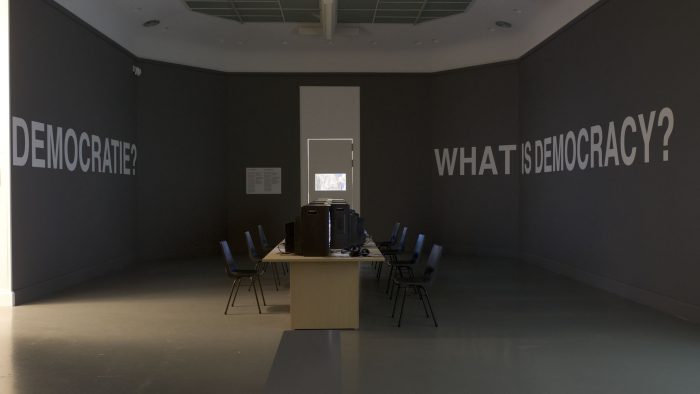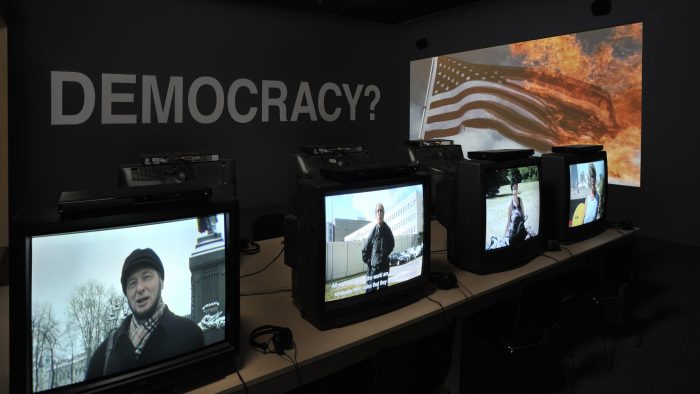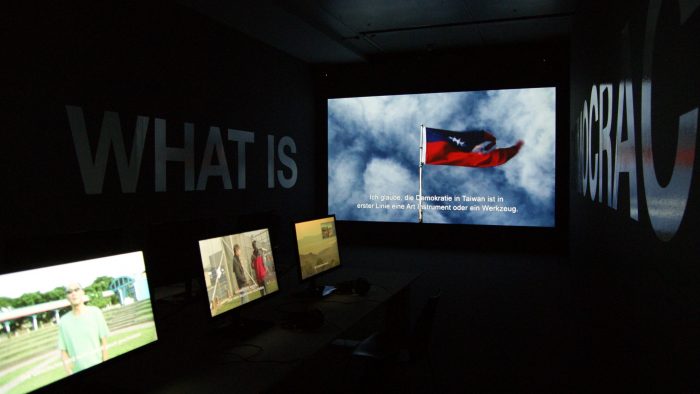An 8-channel video installation
2009
“What is democracy?” is not one question, but is actually two questions. On the one hand, the question relates to conditions of the current, parliamentary representative democracies that are scrutinized critically in this project. On the other hand, the question traces different approaches to what a more democratic system might look like and which organizational forms it could take.
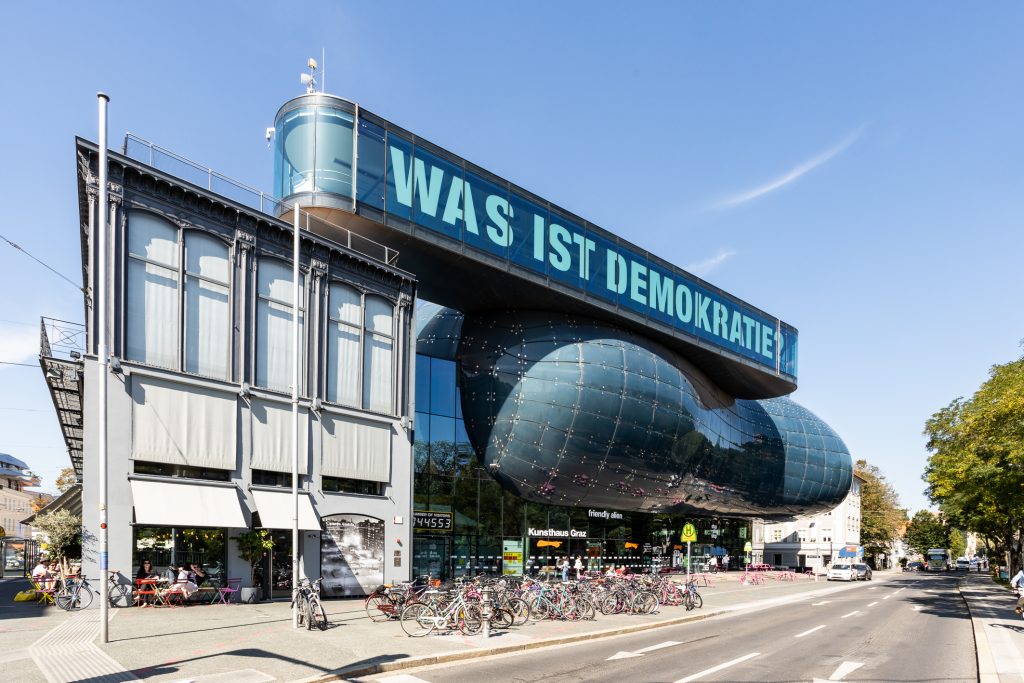
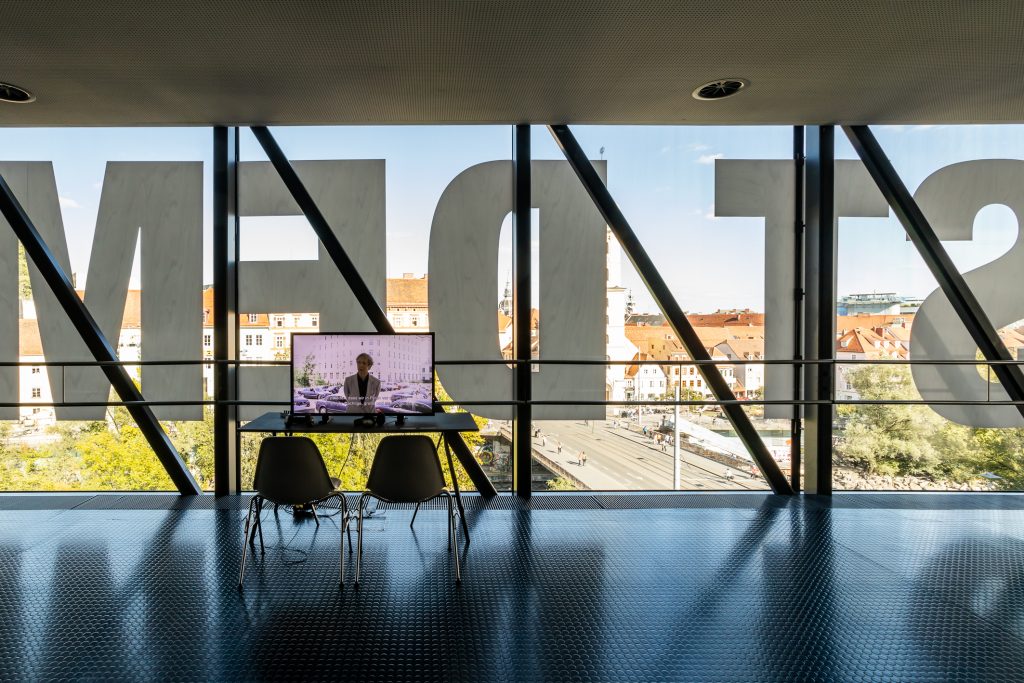
The project asked “What is democracy?” to numerous activists and political analysts in 18 cities around the world, in Amsterdam, Berkeley, Berlin, Bern, Budapest, Copenhagen, London, Melbourne, Moscow, New York, Paris, Rostock, San Francisco, Sydney, Taipei, Tel Aviv, Thessaloniki and Warsaw.
The interviews have been recorded on video since January 2007. Even though all interviewees were asked the same question, the result was a multiplicity of different perspectives and viewpoints from people living in states that are usually labeled “democracies”.
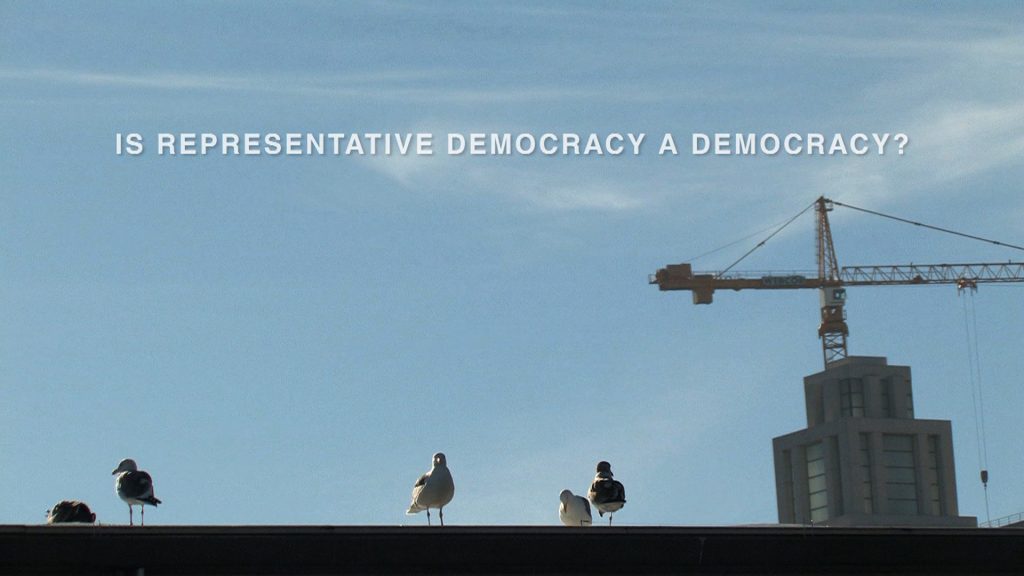
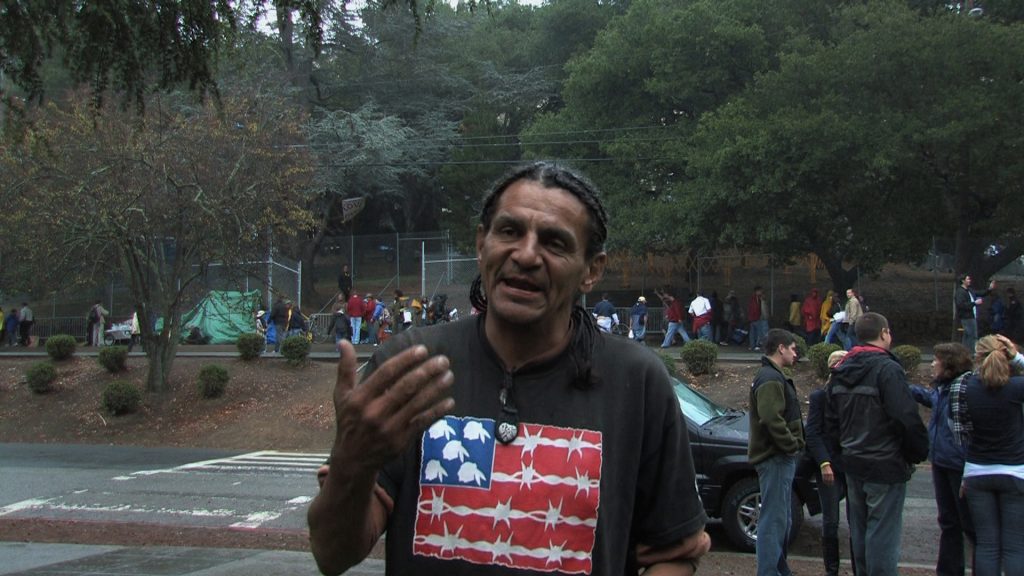
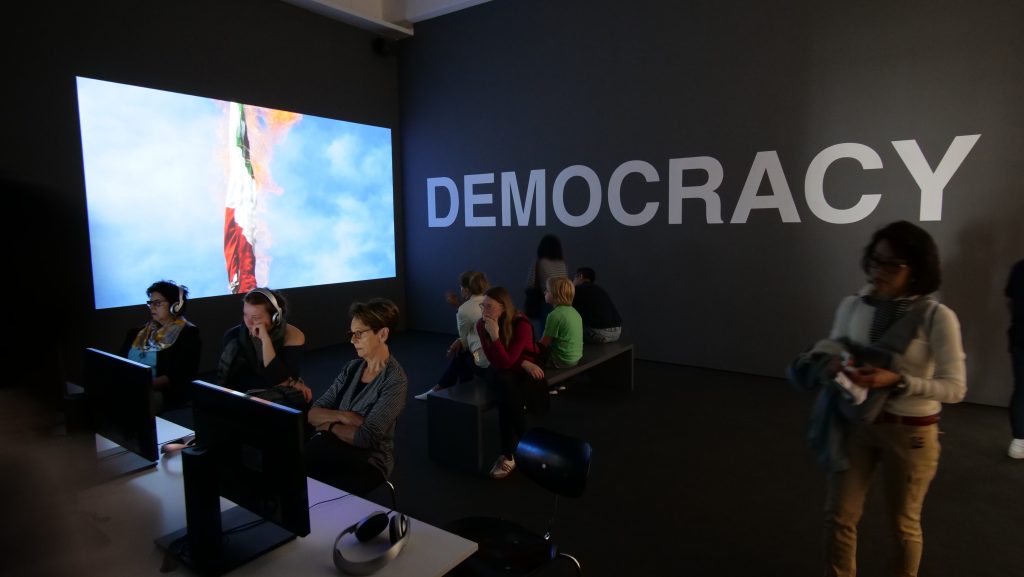
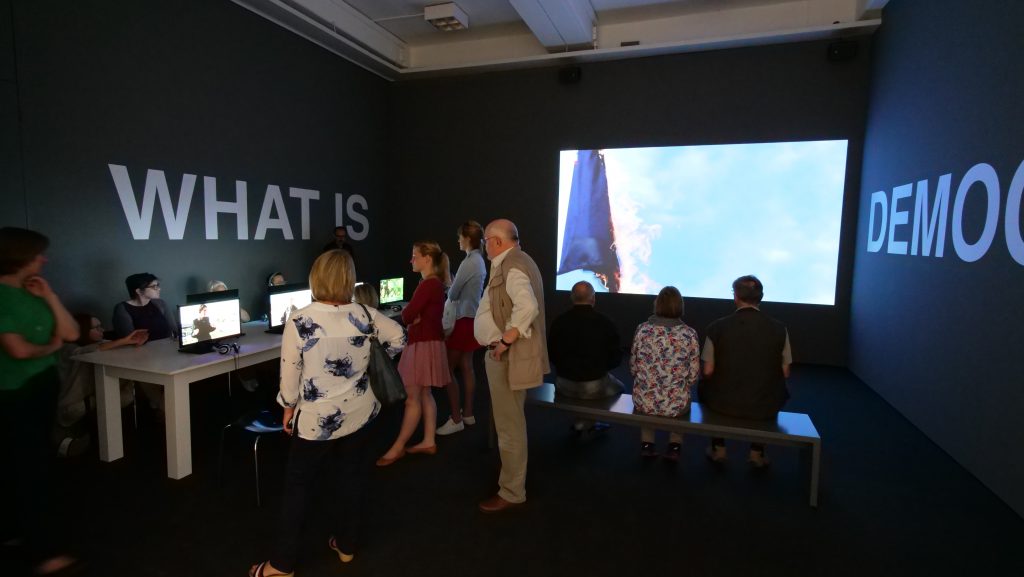
This pool of interviews builds the basis for eight videos, which are presented in an 8-channel video installation. This installation (re)presents a kind of global analysis about the deep political crises of the Western democratic model. In one video, Adam Ostolski (Warsaw) explains that originally “the modern idea of democracy was connected to the notion of progress” and parliamentary states “had some tendency to become more and more democratic by including new types of political actors, such as workers and women. […] But since the 1980s, since the neoliberal trend in politics and economy we have a regression of democracy.” Lize Mogel (New York) notes that situation changed in such a way, that when you think about representative democracy today “you are not necessarily talking about individuals being represented, but more capital being represented.” Nikos Panagos (Thessaloniki) even argues that “representation and democracy are incompatible terms. Therefore, under no circumstances could the present system be called a democracy. It is just a sophisticated form of oligarchy.” Lisa Gray-Garcia (San Francisco) seems to agree, when she labels representative democracy a “fake-democracy”. While some subjects in the videos elaborate their ideas of direct democracy or decision-making processes of indigenous communities, David McNeill (Sydney) raises the issue of whether it makes sense “to continue contesting for the right to own and define the term democracy” or whether “it has been so corrupted and polluted by the conservatives that claimed ownership of it, that it is better to be surrendered.”
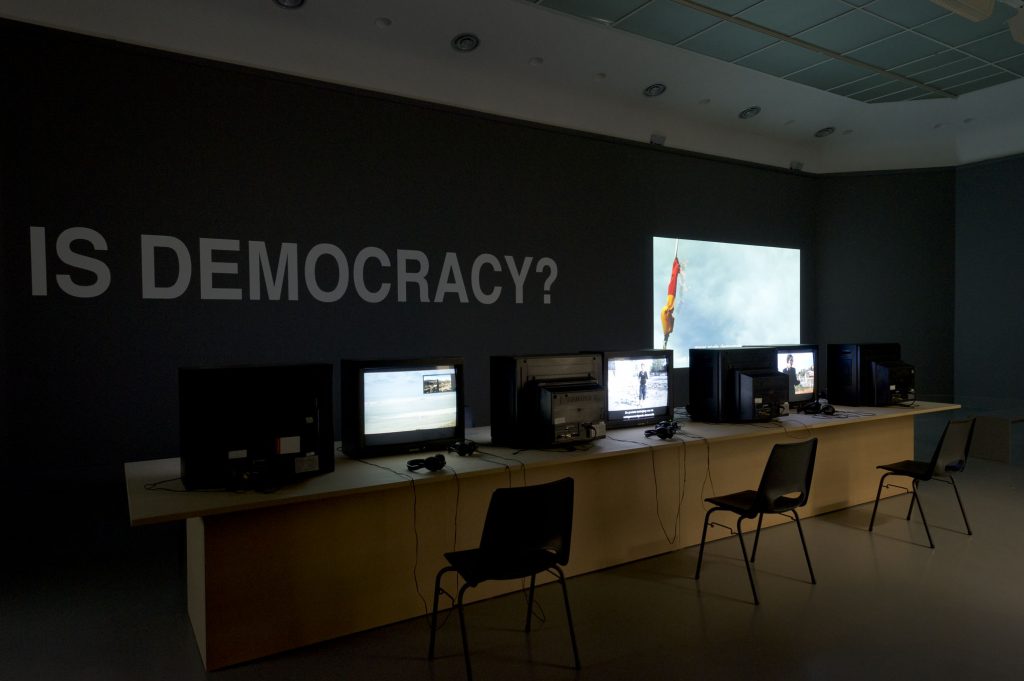
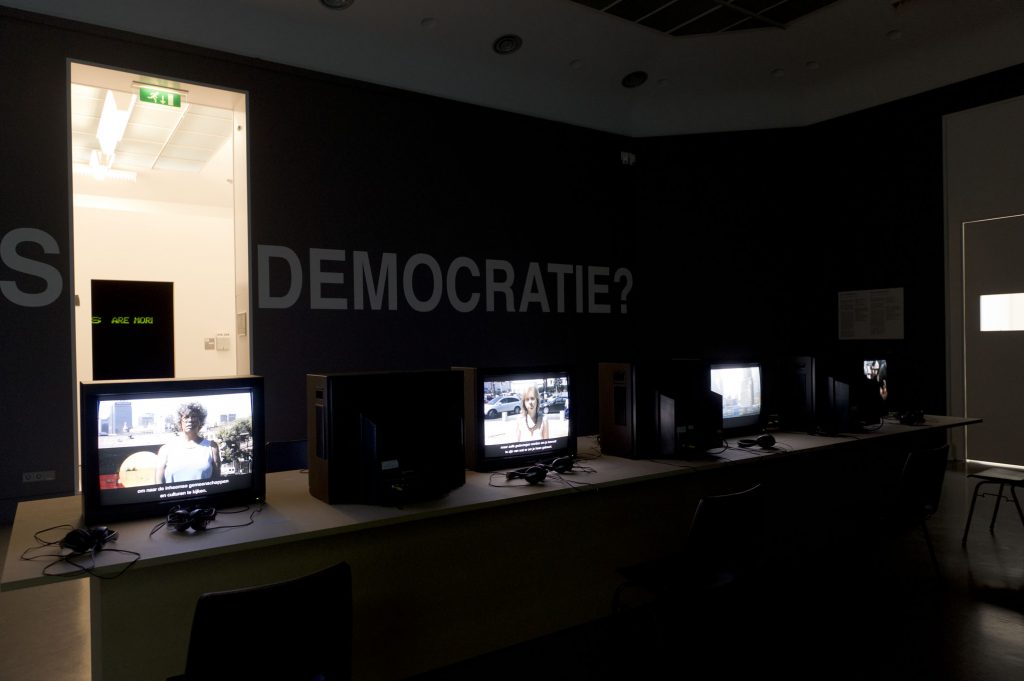
The 8-channel video installation discusses the contested notion of “democracy”, which is misused for the maintenance of order by those in power, while at the same time “democracy” still represents an ideal hundreds of million people in the global south desperately want to achieve. Today it seems almost impossible to be against “democracy”, even though it is getting emptier and emptier. A potential strategy could try to fill what is called “democracy” with new meaning. In this sense, the installation presents a multi-layered discourse on democracy, which expresses a broad field of opinions that go beyond the borders of nation-states and continents.
“Should we consign the Western democracy model to the ash heap of history?” (13 min.)
Film version of “What Is Democracy?”:
The eight videos have the following titles:
“Rethinking representation” (16 min.)
“Politics of exclusions” (23 min.)
“Secrecy instead of democratic transparency” (13 min.)
“New democracies?” (23 min.)
“Is representative democracy a democracy?” (22 min.)
“Direct democracy” (22 min.)
“Reclaiming Indigenous politics” (18 min.)
“Should we consign the Western democracy model to the ash heap of history?” (13 min.)
Concept, interviews, camera and sound recording: Oliver Ressler
Interviewees: Kuan-Hsing Chen, Noortje Marres, Lin Chalozin Dovrat, Thanasis Triaridis, Tone Olaf Nielsen, Jo van der Spek, Cheikh Papa Sakho, Wolf Dieter Narr, Tiny a.k.a. Lisa Gray-Garcia, Joanna Erbel, Yvonne Riano, Sami Bukhari, Trevor Paglen, Tadeusz Kowalik, Adam Ostolski, Boris Kagarlitsky, Michal Kozlowski, Ilaria Vanni, Lize Mogel, Rick Ayers, Janos Kiss, Nikos Panagos, Macha Kurzina, Clare Saunders, Ewa Majewska, Gabor Csillag, Zachary Running Wolf, Jenny Munroe, Jorge Joquera, Miranda Bergman, Patrick Watkins, Abram Mahmoadi, Anja Peter, Tracey Wheatley, Ilya Eric Lee, Berenice Hernández, David McNeill
2nd camera (video 8): Volkmar Geiblinger
Video editing and production: Oliver Ressler
Image editing and subtitles: David Grohe
Animation: Zanny Begg
Composition and sound editing: Rudi Gottsberger
Footage: Sierpien 80 (Ó Telewizja Polska S.A.)
Special thanks to Louisa Avgita, Kai Bauer, Zanny Begg, Karen Bennett, Christine Boehler, Paul Chatterton, Amy Cheng, Eyal Danon, Hilla Dayan, Miklos Erhardt, Takis Fotopoulos, Frédérique Gautier, Peter Grabher, Hou Hanru, Laila Huber, Manray Hsu, Jens Kastner, Caroline Lensing-Hebben, Geert Lovink, Margarethe Makovec, Davor Miskovic, Nikos Panagos, Ted Purves, Gerald Raunig, Natalia Romik, Walter Seidl, Katharina Schlieben, Gregory Sholette, Kuba Szreder, Nora Theiss, Dmitry Vilensky and Tom Waibel.
Translation for English subtitles: Harold Otto
Translation for German subtitles: Otmar Lichtenwörther
Translation for French subtitles: Lucile Gourraud-Beyron
Grants: ERSTE Foundation, Kulturamt der Steiermärkischen Landesregierung, Kulturamt Stadt Graz, Otto-Mauer-Fonds, Biennale de Lyon 2009
The 8-channel video installation “What Is Democracy?” was presented in the following exhibitions:
“nochnichtmehr – Handeln im unmarkierten Raum“, Heinrich-Böll-Stiftung, Berlin (DE), 2009
“The Spectacle of the Everyday”, Biennale de Lyon, Lyon (FR), 2009
“Što je demokracija?” (solo show), Siz Gallery, Rijeka (HR), 2009
“What Is Democracy?” (solo show), Alexandria Contemporary Arts Forum – ACAF, Alexandria (ET), 2010
“What Is Democracy?” (solo show), Galerie KUB, Leipzig (DE), 2010
“Danmark anno 2010 – en guide til nationen for ‘verdens lykkeligste folk’”, Overgaden, Copenhagen (DK), 2010
“What Is Democracy?” (solo show), Peacock Visual Arts, Aberdeen (UK), 2010
“Police the Police”, 4th Young Artists’ Biennial, Bucharest (RO), 2010
“The politics of art”, National Museum of Contemporary Art, Athens (GR), 2010
“Red-Designing the East: Political Designers”, Wyspa Institute of Art, Gdansk (PL), 2010
“Play Van Abbe Part 4 – The Tourist, the Pilgrim, the Flaneur (and the Worker)”, Van Abbe Museum, Eindhoven (NL), 2011
“Without Reality There Is No Utopia”, Centro Andaluz de Arte Contemporaneo – CAAC, Seville (ES), 2011
“Without Reality There Is No Utopia”, Yerba Buena Center for the Arts, San Francisco (US), 2013
“Once upon a time… The Collection until Now”, Van Abbe Museum, Eindhoven (NL), 2013
“global aCtIVISm”, ZKM, Karlsruhe (DE), 2013
“Antidoron – The EMST Collection”, Documenta 14, Kassel (DE), 2017
“Democracia en obra”, CCK, Buenos Aires (AR), 2018
“The Value of Freedom”, Belvedere 21 – Museum of Contemporary Art, Vienna (AT), 2018
“What Is Democracy?” (solo show), Kunsthaus Graz, Graz (AT), 2019
“Macht mit. Demokratie gestalten”, Kunst- und Ausstellungshalle der Bundesrepublik Deutschland, Bonn (DE), 2024

